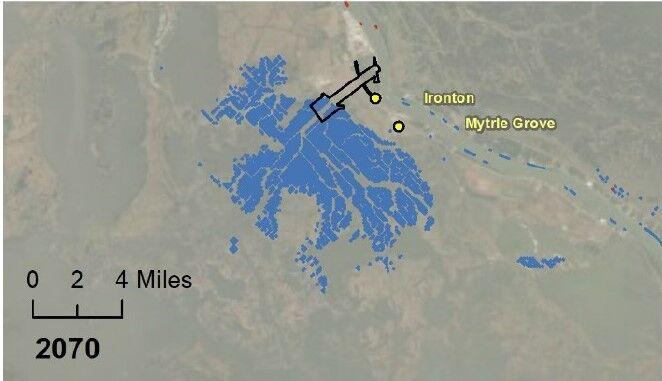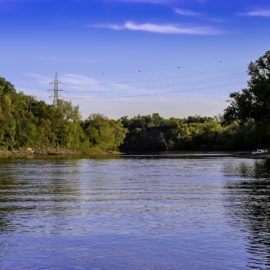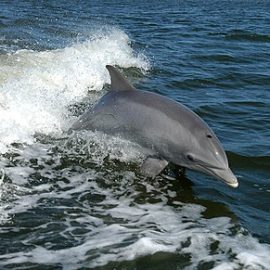
It has taken a while but the proponents persevered and now the Mid-Barataria Diversion is ready to be build.
Louisiana was granted the final necessary funds Wednesday to build the unprecedented Mid-Barataria Sediment Diversion, with construction expected to start later this year on the nearly $3 billion project aimed at helping slow the land loss devastating the coast. The last set of funding will come from the National Fish and Wildlife Foundation, which is granting $660 million from a 2013 settlement of federal criminal charges involving the 2010 BP Deepwater Horizon disaster. That means construction of the diversion has climbed to $2.92 billion. The state Coastal Protection and Restoration Authority said it also is negotiating with the Archer Western-Alberici Joint Venture, chosen in 2018 to build the project, to finalize its cost and when construction will begin. Construction should start this summer, and it is expected to take five years to build. “Today, we’ve overcome the final hurdle in the funding and approval processes for the Mid-Barataria Sediment Diversion,” said CPRA Chairman Chip Kline. “This approval culminates years of hard work and collaboration in which NFWF has been an instrumental partner to CPRA and are eager to get shovels in the ground and start construction.”
nola.com

(Army Corps of Engineers)
This is a major project and that was stated by the CEO of the National Fish and Wildlife Foundation.
Jeff Trandahl, executive director and CEO of the foundation, called the award “the largest single conservation investment in the history of the National Fish and Wildlife Foundation.” “The wetlands in the vicinity of the Mid-Barataria Sediment Diversion were among the most heavily oiled as a result of the Deepwater Horizon Oil Spill and we are pleased to support CPRA’s efforts to continue restoring these vital resources,” he said. The project will release a maximum of 75,000 cubic feet per second of sediment and water from the Mississippi River into Barataria Bay through a 2-mile-long concrete channel near the town of Ironton in Plaquemines Parish. Operating for up to six months a year, the diversion is expected to create more than 21 square miles of new land by the end of its first 50 years of operation, which would then represent 20% of the remaining wetlands in the Barataria Basin because of continued land loss driven by global warming-fueled sea level rise. While the state says diversions like Mid-Barataria are vital to sustain parts of the disappearing coast, commercial fishers in the area strongly oppose it, saying their livelihoods will be ruined due to the influx of freshwater. Hundreds of millions of dollars have been set aside to assist those affected. The new funds are part of $1.212 billion of $2.5 billion given to the foundation as part of a settlement of criminal charges against BP and Transocean, owner of the Deepwater Horizon oil rig that exploded and sank in 2010, triggering the 87-day release of crude oil from BP’s Macondo well into the Gulf of Mexico.

(Army Corps of Engineers)
Louisiana can use her share of the funding for other projects so a win-win.
On receiving the settlement funds, the foundation agreed to set aside Louisiana’s share for development of diversions and barrier island restoration projects. The rest of the money is being used on environmental projects in Texas, Mississippi, Alabama and Florida. The $660 million includes $115 million that had already been granted to the state to pay for engineering and design for the project and will now be used for construction, a foundation spokesperson said. The money will be added to $2.26 billion dedicated to the construction project on Feb. 1 by federal and state trustees overseeing a separate 2013 settlement of federal civil charges against BP that guaranteed $5 billion would be spent on Louisiana projects aimed at restoring natural resource damages caused by the 2010 Deepwater Horizon oil spill. The new $2.92 billion construction cost estimate for the diversion doesn’t include just under $100 million the state already received for engineering and design work from the foundation, or millions more it received earlier from federal restoration funding programs since the project was first proposed in 2001. The estimate does include $378 million set aside for mitigation of the diversion’s expected damage to existing oyster beds, to other existing fisheries, and to individuals who may be affected by rising water levels related to the diversion’s operation. Project costs also include land acquisition and monitoring and adaptive management efforts during construction. In a statement, the coastal authority said extension of the time needed to get permits from the Corps; national economic trends, including inflation; and the authority’s efforts to beef up mitigation and natural resource stewardship efforts as a part of the project increased construction costs, which required the additional money from the foundation.
It is good to see the state, the federal government and NGO’s working together for a common cause.



